- Home
- Isaac Asimov
Asimov's New Guide to Science Page 18
Asimov's New Guide to Science Read online
Page 18
The two largest craters on Phobos are named Hall and Stickney in honor of their discoverer and of his wife, who urged him to try one more night. The two largest craters on Deimos are named Voltaire and Swift: the former, for the French satirist; and the latter, for Jonathan Swift, the English satirist, since both in their fiction had imagined Mars as having two satellites.
Jupiter
Jupiter, the fifth planet from the sun, is the giant of the planetary system. It is 88,700 miles in diameter, 11.2 times that of Earth. Its mass is 318.4 times that of Earth. In fact, it is more than twice as massive as all the other planets put together. Nevertheless, it is still a pygmy compared to the sun, which has a mass 1,040 times that of Jupiter.
On the average, Jupiter is 483 million miles from the sun, or 5.2 times Earth’s distance from the sun. Jupiter never gets closer than about 390 million miles to us even when both it and Earth are on the same side of the sun, and the sunlight that Jupiter receives is only one twenty-seventh as bright as that which we receive. Even so, because of its huge size, it shines bright in our sky.
Its magnitude, at its brightest, is — 2.5, which is considerably brighter than any star. Venus and Mars at their brightest can outdo Jupiter (Venus by a considerable margin). On the other hand, Venus and Mars are often far dimmer, when moving to the farther portion of their orbits. Jupiter, on the other hand, dims only slightly as it moves away from Earth since its orbit is so distant that it scarcely makes a difference whether it is on our side of the sun or not. Jupiter is often, therefore, the brightest object in the sky except for the sun and the moon (especially since it can be in the sky all night long, while Venus never can) and so is well named for the king of the gods in Graeco-Roman mythology.
JOVIAN SATELLITES
When Galileo constructed his first telescope and turned it on the sky, he did not neglect Jupiter. On 7 January 1610, he studied Jupiter and almost at once noticed three little sparks of light near it—two on one side and one on the other, all in a straight line. Night after night, he returned to Jupiter, and always those three little bodies were there, their positions changing as they oscillated from one side of the planet to the other. On 13 January, he noticed a fourth object.
He came to the conclusion that four small bodies were circling Jupiter, just as the moon circles Earth. These were the first objects in the solar system, invisible to the unaided eye, to be discovered by the telescope. Also, here was visible proof that there are some bodies in the solar system that do not revolve about Earth.
Kepler coined the word satellite for these four objects, after a Latin word for people who serve in the entourage of some rich or powerful man. Since then, objects that circle a planet have been called by that name. The moon is Earth’s satellite, and Sputnik I was an artificial satellite.
These four satellites of Jupiter arc lumped together as the Galilean satellites.
Shortly after Galileo’s discovery, they were given individual names by a Dutch astronomer, Simon Marius. From Jupiter outward, they are Io, Europa, Ganymede, and Callisto, each name that of someone associated with Jupiter (Zeus, to the Greeks) in the myths.
Io, the nearest of the Galileans, is 262,000 miles from Jupiter’s center, about the distance of the moon from Earth’s center. However, Io circles Jupiter in 1.77 days—not the 27.32 days the moon takes to circle Earth. Io moves so much more rapidly because it is in the grip of Jupiter’s gravitational attraction, which—owing to Jupiter’s greater mass—is far more intense than Earth’s. (Indeed, it is from Io’s speed that Jupiter’s mass can be calculated.)
Europa, Ganymede, and Callisto, respectively, are 417,000, 665,000, and 1,171,000 miles from Jupiter and circle it in 3.55 days, 7.16 days, and 16.69 days. Jupiter and its four Galilean satellites are like a miniature solar system, and their discovery made the Copernican scheme of the planets much more believable.
Once the satellites made it possible to determine the mass of Jupiter, the great surprise was that its mass is so low. It might be 318.4 times that of Earth, but its volume is 1,400 times that of Earth. If Jupiter takes up 1,400 times as much room as Earth, why should it not have 1,400 times as much matter as Earth does and therefore be 1,400 times as massive? The answer is that each part of Jupiter has a smaller mass than an equivalent part of Earth has. Jupiter has a smaller density.
In fact, Jupiter’s density is only 1.34 times that of water, or only one-fourth the density of Earth. Clearly, Jupiter must be made up of material less dense than rocks and metal.
The satellites themselves are comparable to our moon. Europa, the smallest of the four, is about 1,940 miles in diameter, or a bit smaller than the moon. Io, which is 2,270 miles across, is just about the size of the moon. Callisto and Ganymede are each larger than the moon. Callisto has a diameter of 3,010 miles; and Ganymede, 3,260 miles.
Ganymede is actually the largest satellite in the solar system and has a mass 2½ times that of the moon. In fact, Ganymede is distinctly larger than the planet Mercury, while Callisto is just about Mercury’s size. Mercury, however, is made of denser materials than Ganymede is, so that the larger body of Ganymede has only about three-fifths the mass of Mercury. Io and Europa, the two inner satellites, are about as dense as the moon and must be made up of rocky material. Ganymede and Callisto have densities much like that of Jupiter and must be made up of lighter materials.
It is not surprising that Jupiter has four large satellites and Earth only one, considering how much larger the former is. In fact, if there is any surprise, it should be that Jupiter does not have still more, or Earth still less.
The four Galilean satellites together have 6.2 times the mass of the moon but only 1/4,200 the mass of Jupiter, the planet they circle. The moon, all by itself, has 1/81 the mass of Earth, the planet it circles.
Planets generally have satellites that are tiny in comparison with themselves—as Jupiter has. Of the small planets, Venus and Mercury have no satellites at all (even though Venus is almost the size of Earth), and Mars has two satellites, but very tiny ones. Earth’s satellite is so large that the two make up what might almost be considered a double planet. (Until recently, Earth was thought to be unique in this respect—but wrongly so, as we will see later in this chapter.)
For nearly three centuries after Galileo’s discovery, no further satellites were discovered for Jupiter; although during that time, fifteen satellites were discovered for other planets.
Finally, in 1892, the American astronomer Edward Emerson Barnard detected a speck of light near Jupiter, so dim that it was almost impossible to see it in the glare of Jupiter’s light. It was a fifth satellite of Jupiter and the last satellite to be discovered by eye observation. Since then, satellites have been discovered from photographs taken either from Earth or by a probe.
This fifth satellite was named Amalthea (after a nymph who was supposed to have nursed Zeus as an infant). The name was made official only in the 1970s.
Amalthea is only 112,000 miles from Jupiter’s center and circles it in 11.95 hours. It is closer than any of the Galilean satellites—one reason it took so long to be discovered; Jupiter’s light is blinding at that distance. For another, its diameter is only about 155 miles, only one-thirteenth that of the smallest Galilean, so that it is very dim.
Jupiter turned out, though, to have many other satellites, even smaller than Amalthea and therefore even dimmer. Most of these are located far from Jupiter, far outside the orbit of any of the Galileans. In the twentieth century, eight of these outer satellites were detected: the first in 1904, and the eighth in 1974. In that time, they were denoted only by Roman numerals in the order of their discovery, from Jupiter VI to Jupiter XIII.
The American astronomer Charles Dillon Perrine discovered Jupiter VI in December 1904 and Jupiter VII in January 1905. Jupiter VI is about 60 miles in diameter; and Jupiter VII, about 20 miles in diameter.
Jupiter VIII was discovered in 1908 by the British astronomer P. J. Melotte; while the American astronomer Seth B. Nicholson disc
overed Jupiter IX in 1914, Jupiter X and Jupiter XI in 1938, and Jupiter XII in 1951. These latter four are each about 15 miles across.
Finally, on 10 September 1974, the American astronomer Charles T. Kowal discovered Jupiter XIII, which is only 10 miles across.
These outer satellites can be divided into two groups. The inner four—VI, VII, X, and XIII—are at average distances from Jupiter in the neighborhood of 7 million miles, so that they are about six times as far from Jupiter as Callisto (the outermost Galilean) is. The outer four are, on the average, about 14 million miles from Jupiter and are thus twice as far away as the inner four.
The Galilean satellites all move about Jupiter in the plane of the planet’s equator and in almost exactly circular orbits. This is an expected state of affairs and is brought about by Jupiter’s tidal effect (which I shall discuss further in the next chapter) on the satellites. If a satellite’s orbit is not in the equatorial plane (that is, it is inclined), or if it is not circular (that is, it is eccentric), the tidal effect, given time, draws the satellite into the orbital plane and makes the orbit circular.
While tidal effect is proportionate to the affecting object’s mass, it weakens rapidly over distance and is inversely proportionate to the size of the object affected. Hence, despite its huge mass, Jupiter exerts only a weak tidal effect on the small outer satellites. Thus, even though four of them are at about the same distance from Jupiter (on the average), and four others are all at about another distance, there is no imminent danger of collisions. With each orbit differently inclined and differently eccentric, none ever approaches any other as all circle the planet.
The outer group of four of these outer satellites have orbits inclined to such a degree that they have been twisted upside down, so to speak. They revolve about Jupiter in retrograde fashion, moving clockwise (as viewed from above Jupiter’s north pole) rather than counterclockwise, as do all the other satellites of Jupiter.
It is possible that these small outer satellites are captured asteroids (which I shall discuss later in this chapter) and, as such, their irregular orbits could be due to their having been part of Jupiter’s satellite system for relatively short times—only since their capture—with tidal effects having less time to modify their orbits. Besides, it can be shown that it is easier for a planet to capture a satellite if that satellite approaches in such a way as to move about the planet in a retrograde orbit.
The satellite that recedes farthest from Jupiter is Jupiter VIII (now called Pasiphae, for all the outer satellites were given official names—obscure mythological ones—in recent years). Its orbit is so eccentric that at its farthest point, Pasiphae is 20.6 million miles from Jupiter, over 80 times as far as the moon ever gets from Earth. This is the farthest any known satellite gets from the planet it circles.
Jupiter IX (Sinope) has a slightly larger average distance than Pasiphae and therefore takes longer to circle Jupiter. Sinope goes once around Jupiter in 758 days, or almost exactly two years and one month. No other known satellite has so long a period of revolution.
JUPITER’S SHAPE AND SURFACE
What about Jupiter itself? In 1691, Cassini, studying Jupiter in his telescope, noted that it was not a circle of light, but was, rather a definite ellipse.
This observation meant, three dimensionally, that Jupiter was not a sphere but an oblate spheroid, rather like a tangerine.
This was astonishing since the sun and the moon (the latter when full) are perfect circles of light and seemed therefore perfect spheres. However, Newton’s theories (then quite new) explained the situation perfectly. As we shall see in the next chapter, a rotating sphere is likely to be an oblate spheroid. Rotation causes a spinning sphere to bulge in the equatorial regions and flatten at the poles; the faster the rotation, the more extreme the departure from the spherical.
Hence, the diameter from one point on the equator to another point on it at the other side (the equatorial diameter) must be longer than the diameter from the north pole to the south pole (the polar diameter). Jupiter’s equatorial diameter, the usual diameter given in astronomy books, is 88,700 miles, but the polar diameter is only 83,300 miles. The difference between the two is 5,400 miles (about two-thirds the total diameter of Earth); and this difference divided by the equatorial diameter gives a figure known as oblateness. The oblateness of Jupiter is 0.062 or, in fractions, about one-sixteenth.
Mercury, Venus, and our moon, which rotate very slowly, have no measurable oblateness. While the sun does rotate at a moderate speed, its enormous gravitational pull keeps it from bulging much, and it, too, has no measurable oblateness. Earth rotates moderately quickly and has a small oblateness of 0.0033. Mars also has a moderate speed of rotation and a smaller gravitational pull to keep it from bulging; and its oblateness is 0.0052.
Jupiter has an oblateness nearly nineteen times that of Earth despite a much greater gravitational pull, so we must expect Jupiter to spin much more quickly on its axis. And so it does. Cassini himself, in 1665, had followed markings on Jupiter’s surface as they moved steadily about the globe, and noted the period of rotation to be just under 10 hours. (The present figure is 9.85 hours, or two-fifths of an earth-day.)
Although Jupiter has a much shorter rotational period than Earth has, the former is the far larger of the two. A point on Earth’s equator travels 1,040 miles an hour as it makes a complete circuit in 24 hours. A point on Jupiter’s equator would have to travel 28,000 miles an hour to complete a circuit of the planet in 9.85 hours.
The spots noted by Cassini (and by other astronomers after him) were always changing and so were not likely to be part of a solid surface; What these astronomers were seeing was more likely to be a cloud layer, as in the case of Venus, and the spots would be various storm systems. There are also colored streaks parallel to Jupiter’s equator which might be the result of prevailing winds. For the most part, Jupiter is yellow in color, while the colored streaks vary from orange to brown, with occasional bits of white, blue, or gray.
The most notable marking on Jupiter’s surface was first seen by the English scientist Robert Hooke in 1664; and in 1672, Cassini made a drawing of Jupiter which showed this marking as a large round spot. The spot showed up in other drawings in later years; but it was not until 1878 that it was dramatically described by a German astronomer, Ernst Wilhelm Tempel. It seemed quite red to him at the time, and it has ever since been known as the Great Red Spot. The color changes with time and some times is so pale the spot can hardly be noticed with a poor telescope. It is an oval 30,000 miles across from east to west and 8,000 miles from north to south, as seen from Earth.
Some astronomers wondered if the Great Red Spot was a vast tornado. In fact, Jupiter is so large and massive that there was some speculation that it might be much hotter than other planets—hot enough to be nearly red hot. The Great Red Spot might actually be a red-hot region. Nevertheless, although Jupiter must undoubtedly be extremely hot in its interior, its surface is not. In 1926, an American astronomer, Donald Howard Menzel, showed that Jupiter’s temperature at the cloud layer we can see is −135° C.
JUPITER’S SUBSTANCE
Because of its low density, Jupiter must be rich in material that is less dense than rocks and metals.
The most common materials in the universe generally are hydrogen and helium. Hydrogen atoms make up about 90 percent of all the atoms there are, and helium atoms make up another 9 percent. This fact may not be surprising when one considers that hydrogen atoms are the simplest in existence, with helium atoms second simplest. Of the atoms that remain, carbon, oxygen, nitrogen, neon, and sulfur make up the bulk. Hydrogen and oxygen atoms combine to form water molecules; hydrogen and carbon atoms combine to form methane molecules; hydrogen and nitrogen atoms combine to form ammonia molecules.
The density of all these substances under ordinary conditions is equal to or less than that of water. Under great pressures, as would prevail in Jupiter’s interior, their densities might rise to be greater than that of water
. If Jupiter consisted of such substances, they would account for its low density.
In 1932, a German astronomer, Rupert Wildt, studied the light reflected from Jupiter and found that certain wavelengths were absorbed+just those wavelengths that would be absorbed by ammonia and methane. He reasoned that these two substances, at least, are present in Jupiter’s atmosphere.
In 1952, Jupiter was going to pass in front of the star Sigma Arietis—an event closely observed by two American astronomers, William Alvin Baum and Arthur Dodd Code. As the star approached Jupiter’s globe, its light passed through the thin atmosphere above Jupiter’s cloud layer. From the manner III which the light was dimmed, it was possible to show that the atmosphere was principally hydrogen and helium. In 1963, studies by an American astronomer, Hyron Spinrad, showed neon present as well.
All these substances are gases under earthly conditions; and if they make up a major portion of Jupiter’s structure, it came to seem fair to call Jupiter a gas giant.
The first Jupiter probes were Pioneer 10 and Pioneer 11, which were launched on 2 March 1972 and on 5 April 1973, respectively. Pioneer 10 passed only 85,000 miles above Jupiter’s visible surface on 3 December 1973. Pioneer 11 passed only 26,000 miles above it one year later, on 2 December 1974—passing over the planet’s north pole, which human beings thus saw for the first time.
The next pair of probes, more advanced, were Voyager 1 and Voyager 2, which, respectively, were launched on 20 August and 5 September 1977. They passed by Jupiter in March and July of 1979.
These probes confirmed the earlier deductions about Jupiter’s atmosphere. It was largely hydrogen and helium in about a ratio of 10 to 1 (just about the situation in the universe generally). Components not detected from Earth included ethane and acetylene (both combinations of carbon and hydrogen), water, carbon monoxide, phosphine, and germane.

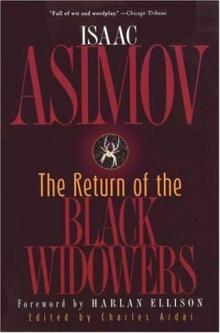 The Return of the Black Widowers
The Return of the Black Widowers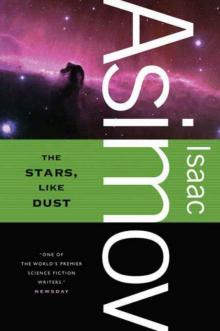 The Stars, Like Dust
The Stars, Like Dust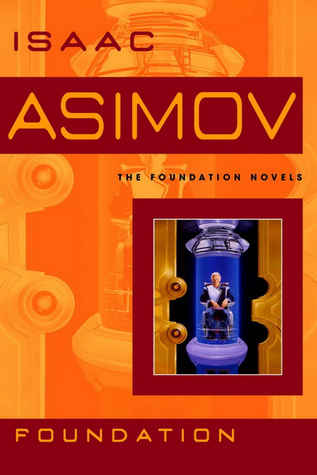 Foundation
Foundation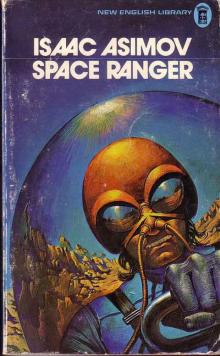 David Starr Space Ranger
David Starr Space Ranger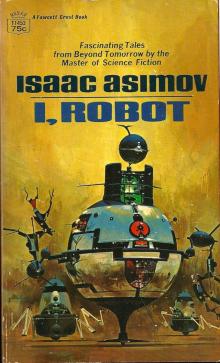 I, Robot
I, Robot Puzzles of the Black Widowers
Puzzles of the Black Widowers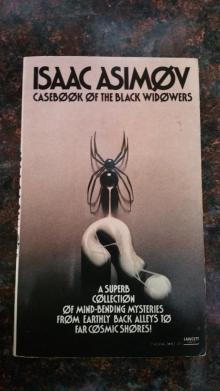 Casebook of the Black Widowers
Casebook of the Black Widowers The Ugly Little Boy
The Ugly Little Boy Azazel
Azazel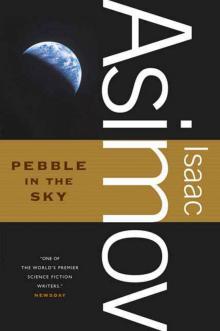 Pebble in the Sky
Pebble in the Sky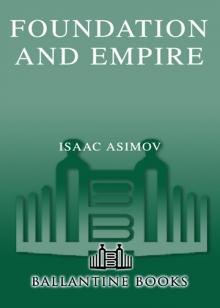 Foundation and Empire
Foundation and Empire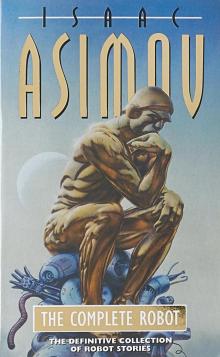 The Complete Robot
The Complete Robot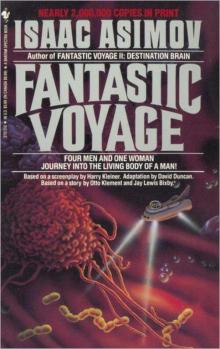 Fantastic Voyage
Fantastic Voyage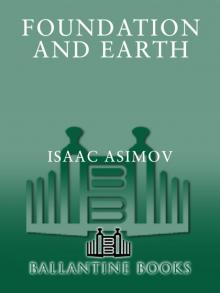 Foundation and Earth
Foundation and Earth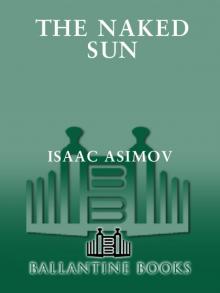 The Naked Sun
The Naked Sun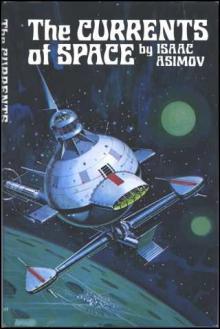 The Currents of Space
The Currents of Space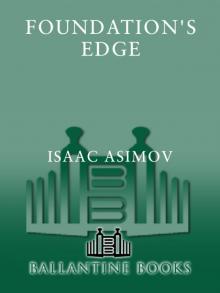 Foundation's Edge
Foundation's Edge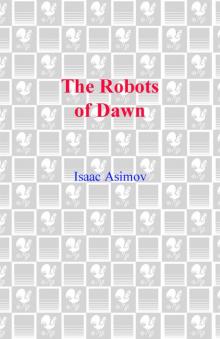 The Robots of Dawn
The Robots of Dawn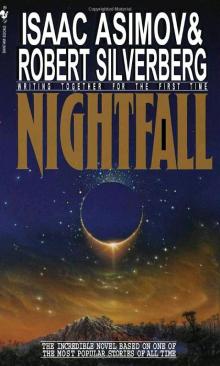 Nightfall
Nightfall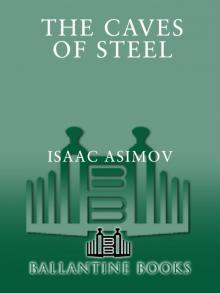 The Caves of Steel
The Caves of Steel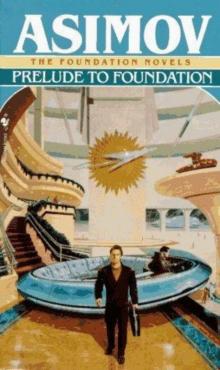 Prelude to Foundation
Prelude to Foundation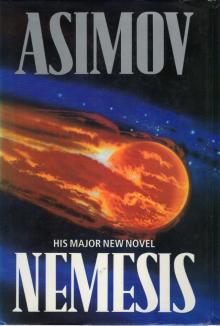 Nemesis
Nemesis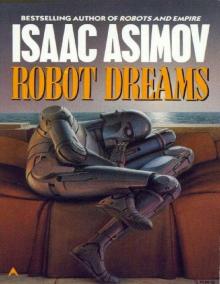 Robot Dreams
Robot Dreams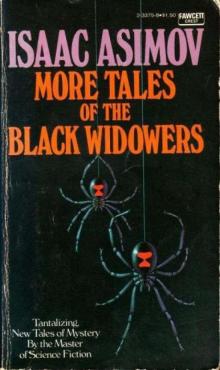 More Tales of the Black Widowers
More Tales of the Black Widowers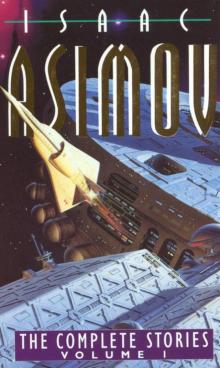 The Complete Stories
The Complete Stories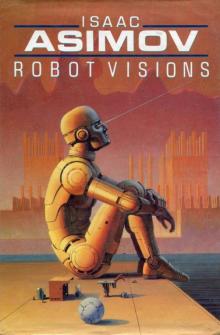 Robot Visions
Robot Visions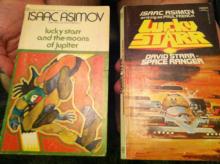 Lucky Starr And The Moons of Jupiter
Lucky Starr And The Moons of Jupiter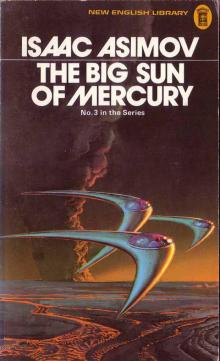 Lucky Starr and the Big Sun of Mercury
Lucky Starr and the Big Sun of Mercury The End of Eternity
The End of Eternity The Bicentennial Man and Other Stories
The Bicentennial Man and Other Stories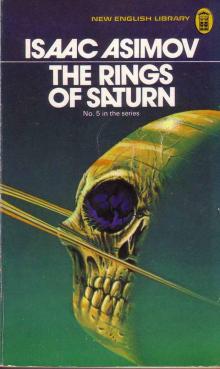 Lucky Starr And The Rings Of Saturn
Lucky Starr And The Rings Of Saturn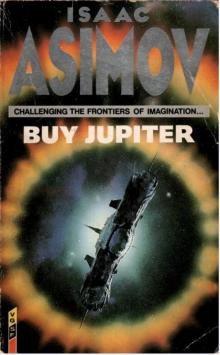 Buy Jupiter and Other Stories
Buy Jupiter and Other Stories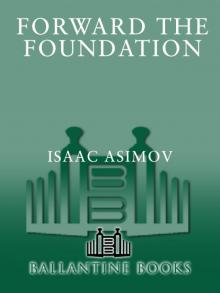 Forward the Foundation
Forward the Foundation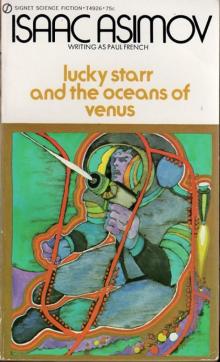 Lucky Starr and the Oceans of Venus
Lucky Starr and the Oceans of Venus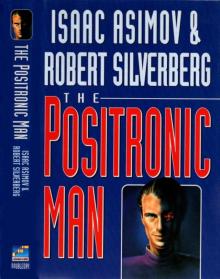 The Positronic Man
The Positronic Man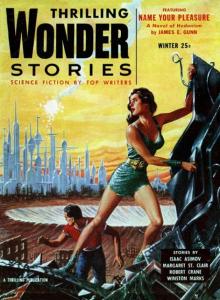 The Portable Star
The Portable Star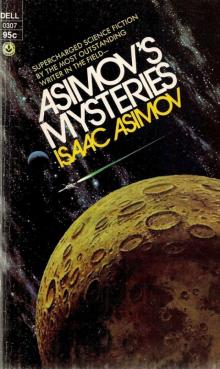 Asimovs Mysteries
Asimovs Mysteries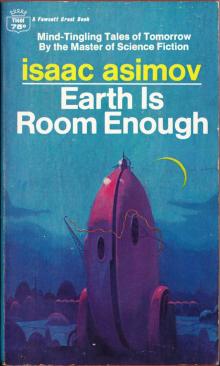 Earth Is Room Enough
Earth Is Room Enough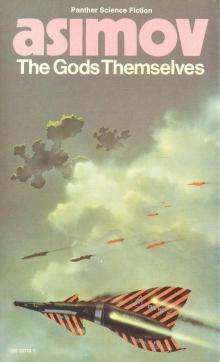 The Gods Themselves
The Gods Themselves Youth
Youth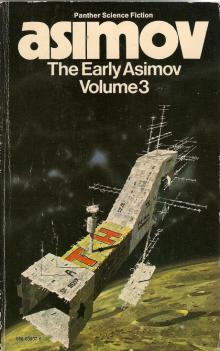 The Early Asimov Volume 3
The Early Asimov Volume 3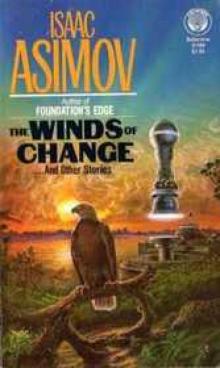 The Winds of Change and Other Stories
The Winds of Change and Other Stories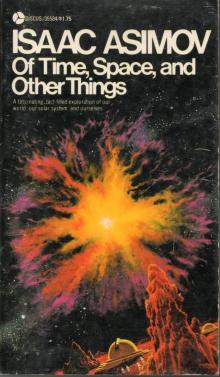 Of Time, Space, and Other Things
Of Time, Space, and Other Things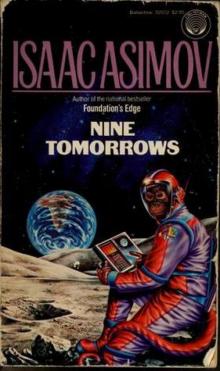 Nine Tomorrows
Nine Tomorrows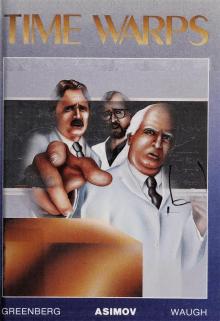 Time Warps
Time Warps Robots and Empire
Robots and Empire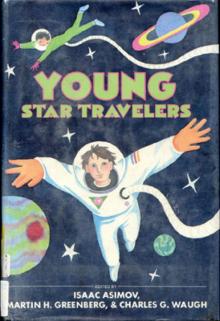 Young Star Travelers
Young Star Travelers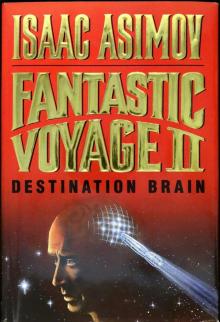 Fantastic Voyage II: Destination Brain
Fantastic Voyage II: Destination Brain Second Foundation
Second Foundation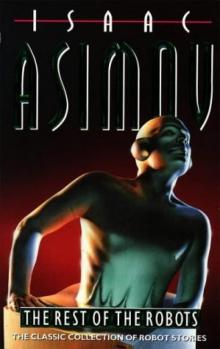 The Rest of the Robots
The Rest of the Robots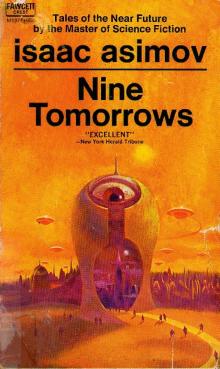 NINE TOMORROWS Tales of the Near Future
NINE TOMORROWS Tales of the Near Future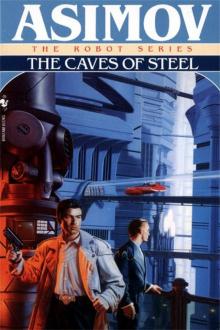 Daneel Olivaw 1 - The Caves of Steel
Daneel Olivaw 1 - The Caves of Steel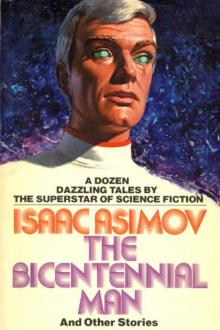 THE BICENTENNIAL MAN
THE BICENTENNIAL MAN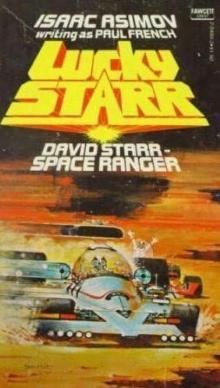 David Starr Space Ranger (lucky starr)
David Starr Space Ranger (lucky starr)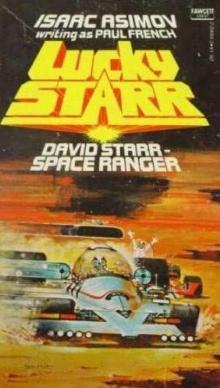 David Starr Space Ranger (ls)
David Starr Space Ranger (ls)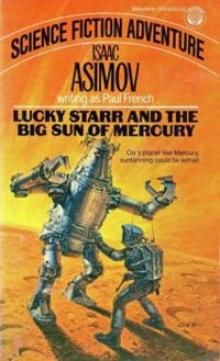 Lucky Starr And The Big Sun Of Mercury ls-4
Lucky Starr And The Big Sun Of Mercury ls-4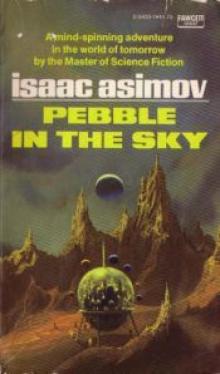 Pebble In The Sky te-1
Pebble In The Sky te-1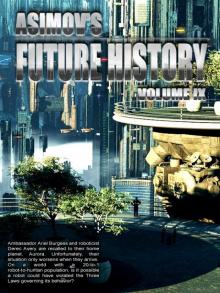 Asimov’s Future History Volume 9
Asimov’s Future History Volume 9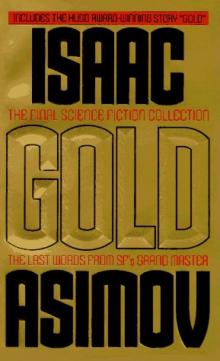 Gold: The Final Science Fiction Collection
Gold: The Final Science Fiction Collection Foundation and Earth f-7
Foundation and Earth f-7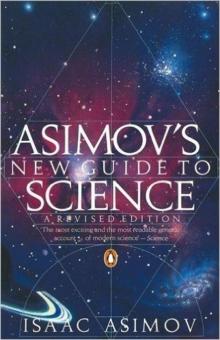 Asimov's New Guide to Science
Asimov's New Guide to Science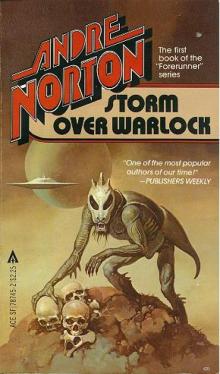 STORM OVER WARLOCK
STORM OVER WARLOCK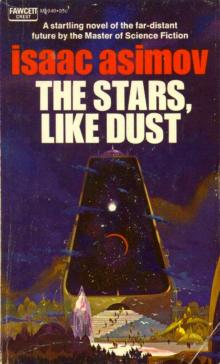 Stars, Like Dust
Stars, Like Dust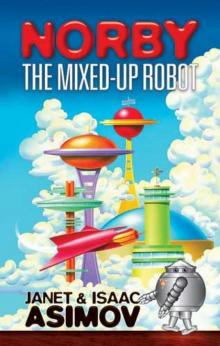 Norby The Mixed-Up Robot
Norby The Mixed-Up Robot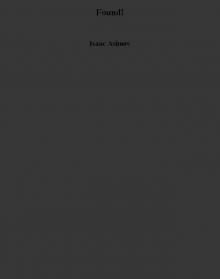 Found!
Found!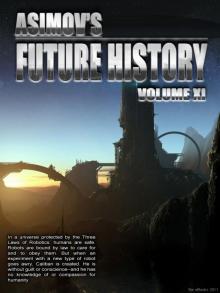 Asimov’s Future History Volume 11
Asimov’s Future History Volume 11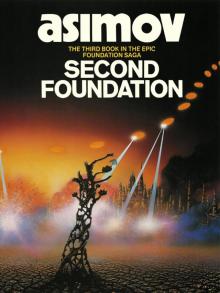 Second Foundation f-5
Second Foundation f-5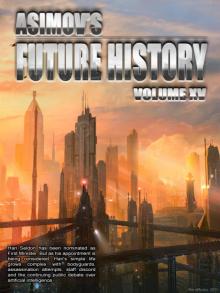 Asimov’s Future History Volume 15
Asimov’s Future History Volume 15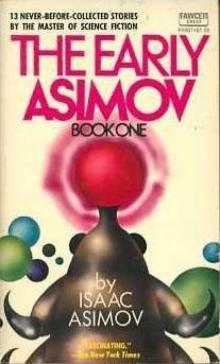 The Early Asimov. Volume 1
The Early Asimov. Volume 1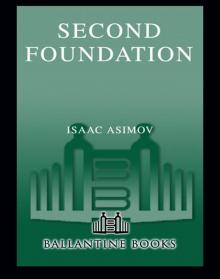 Secound Foundation
Secound Foundation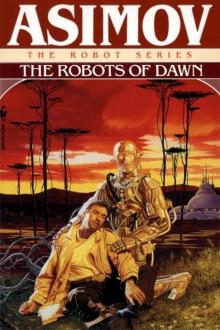 Daneel Olivaw 3 - The Robots of Dawn
Daneel Olivaw 3 - The Robots of Dawn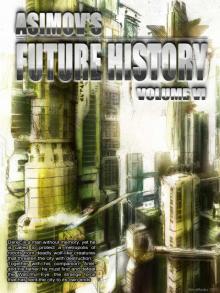 Asimov’s Future History Volume 6
Asimov’s Future History Volume 6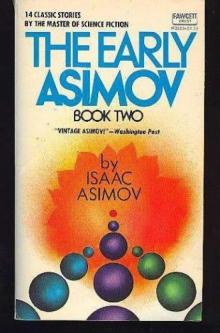 The Early Asimov. Volume 2
The Early Asimov. Volume 2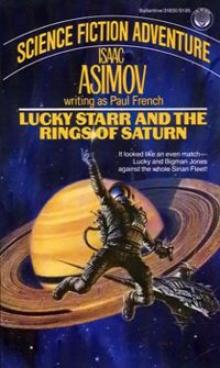 Lucky Starr And The Rings Of Saturn ls-6
Lucky Starr And The Rings Of Saturn ls-6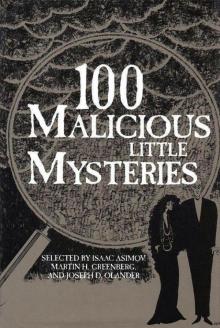 100 Malicious Little Mysteries
100 Malicious Little Mysteries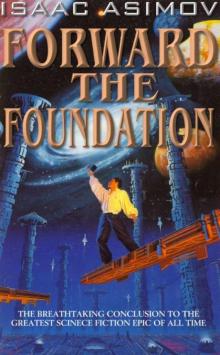 Forward the Foundation f-2
Forward the Foundation f-2 I.Asimov: A Memoir
I.Asimov: A Memoir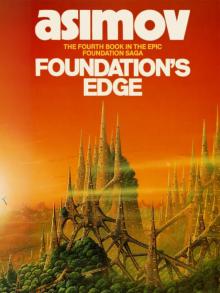 Foundation's Edge f-6
Foundation's Edge f-6 Lucky Starr and the Pirates of the Asteroids ls-2
Lucky Starr and the Pirates of the Asteroids ls-2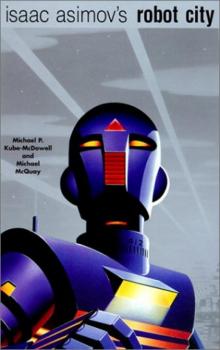 Robot City 1 & 2
Robot City 1 & 2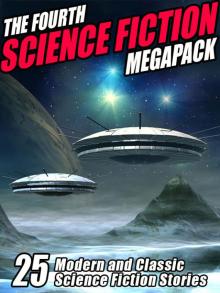 The Fourth Science Fiction Megapack
The Fourth Science Fiction Megapack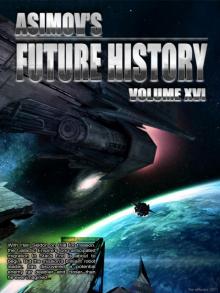 Asimov’s Future History Volume 16
Asimov’s Future History Volume 16 The Dim Rumble
The Dim Rumble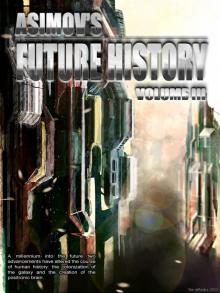 Asimov's Future History Volume 3
Asimov's Future History Volume 3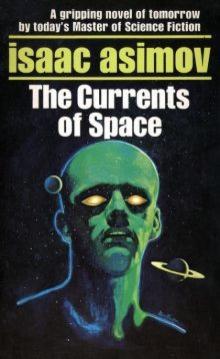 The Currents Of Space te-3
The Currents Of Space te-3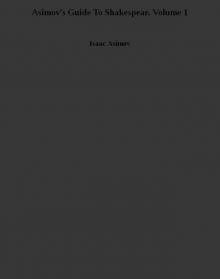 Asimov’s Guide To Shakespear. Volume 1
Asimov’s Guide To Shakespear. Volume 1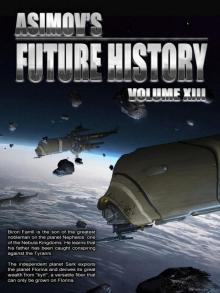 Asimov’s Future History Volume 13
Asimov’s Future History Volume 13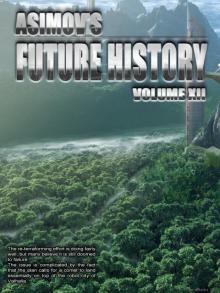 Asimov’s Future History Volume 12
Asimov’s Future History Volume 12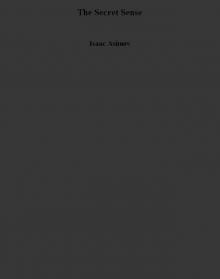 The Secret Sense
The Secret Sense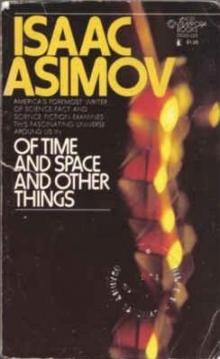 Of Time and Space and Other Things
Of Time and Space and Other Things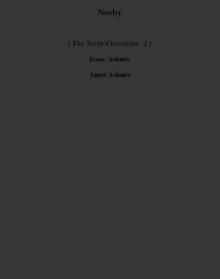 Norby tnc-2
Norby tnc-2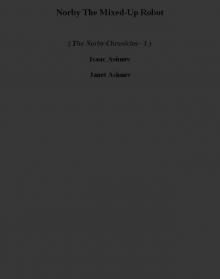 Norby The Mixed-Up Robot tnc-1
Norby The Mixed-Up Robot tnc-1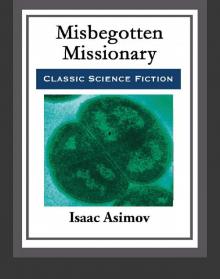 Misbegotten Missionary
Misbegotten Missionary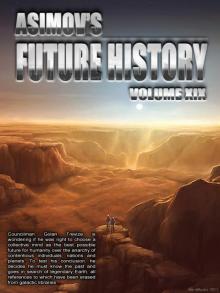 Asimov’s Future History Volume 19
Asimov’s Future History Volume 19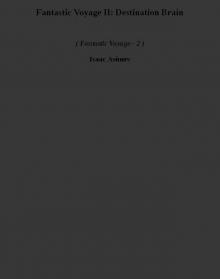 Fantastic Voyage II: Destination Brain fv-2
Fantastic Voyage II: Destination Brain fv-2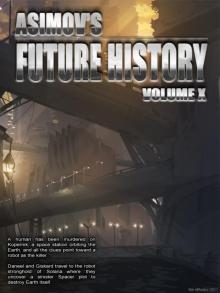 Asimov’s Future History Volume 10
Asimov’s Future History Volume 10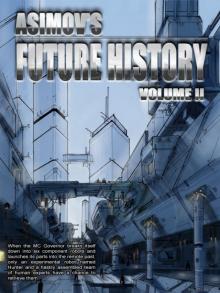 Asimov's Future History Volume 2
Asimov's Future History Volume 2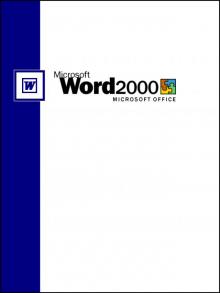 Feeling of Power
Feeling of Power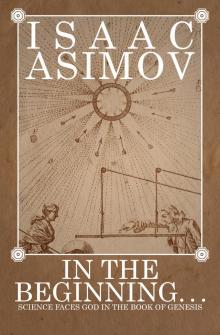 In the Beginning
In the Beginning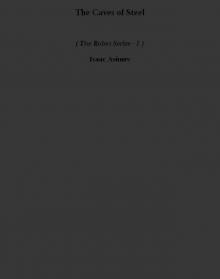 The Caves of Steel trs-1
The Caves of Steel trs-1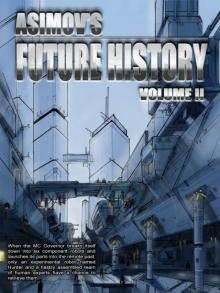 Asimov's Future History Vol 2
Asimov's Future History Vol 2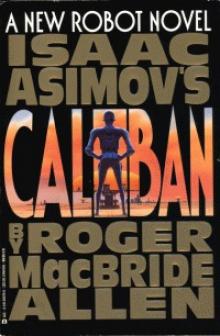 Caliban c-1
Caliban c-1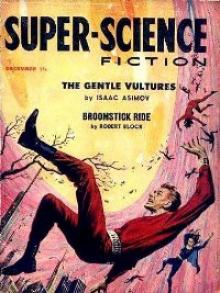 The Gentle Vultures
The Gentle Vultures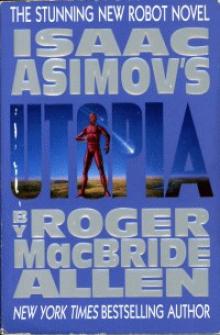 Utopia c-3
Utopia c-3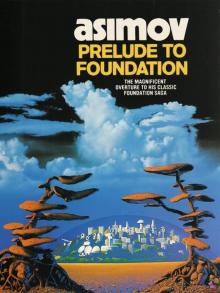 Prelude to Foundation f-1
Prelude to Foundation f-1 Short Stories Vol.1
Short Stories Vol.1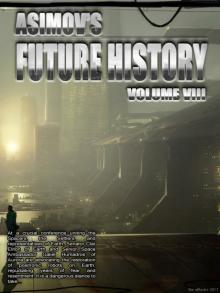 Asimov’s Future History Volume 8
Asimov’s Future History Volume 8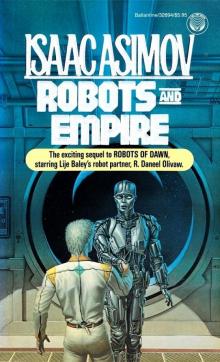 Daneel Olivaw 4 - Robots and Empire
Daneel Olivaw 4 - Robots and Empire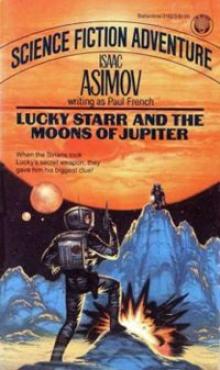 Lucky Starr The And The Moons of Jupiter ls-5
Lucky Starr The And The Moons of Jupiter ls-5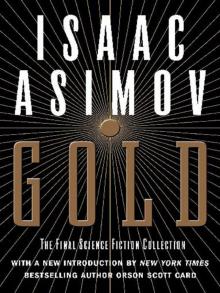 Gold
Gold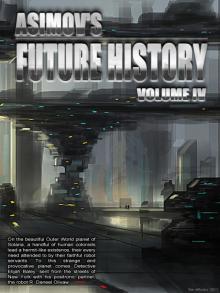 Asimov’s Future History Volume 4
Asimov’s Future History Volume 4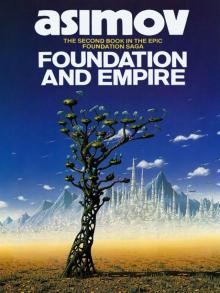 Foundation and Empire f-4
Foundation and Empire f-4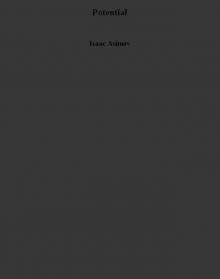 Potential
Potential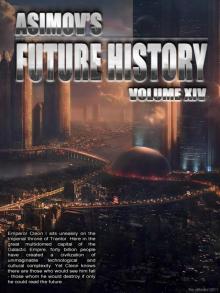 Asimov’s Future History Volume 14
Asimov’s Future History Volume 14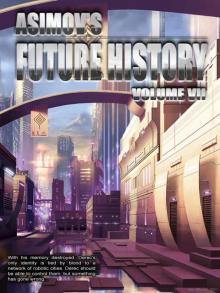 Asimov’s Future History Volume 7
Asimov’s Future History Volume 7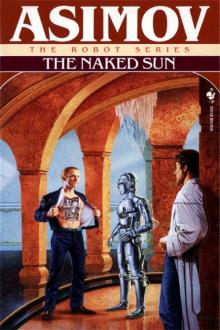 Daneel Olivaw 2 - The Naked Sun
Daneel Olivaw 2 - The Naked Sun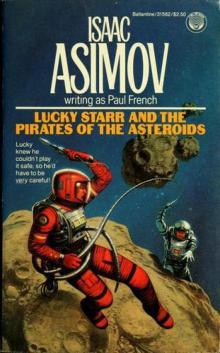 Lucky Starr and the Pirates of the Asteroids
Lucky Starr and the Pirates of the Asteroids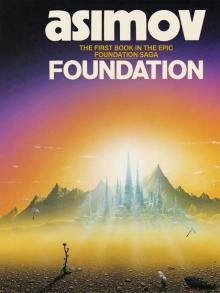 Foundation f-3
Foundation f-3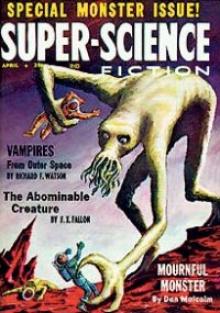 All the Troubles of the World
All the Troubles of the World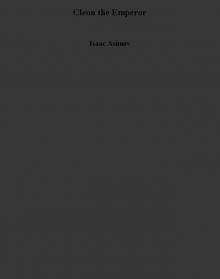 Cleon the Emperor
Cleon the Emperor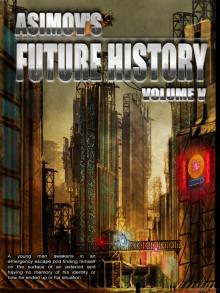 Asimov's Future History Volume 5
Asimov's Future History Volume 5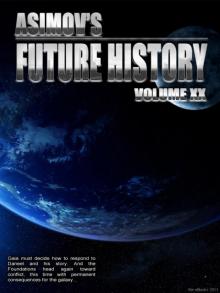 Asimov’s Future History Volume 20
Asimov’s Future History Volume 20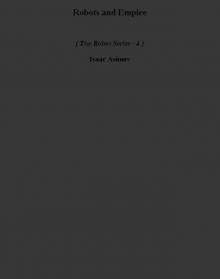 Robots and Empire trs-4
Robots and Empire trs-4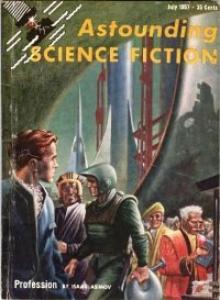 Profession
Profession It's Been a Good Life
It's Been a Good Life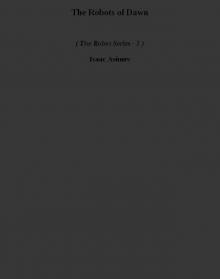 The Robots of Dawn trs-3
The Robots of Dawn trs-3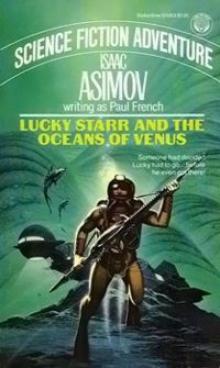 Lucky Starr And The Oceanf Of Venus ls-3
Lucky Starr And The Oceanf Of Venus ls-3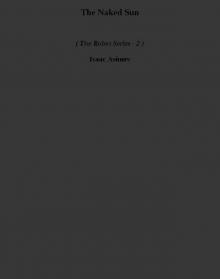 The Naked Sun trs-2
The Naked Sun trs-2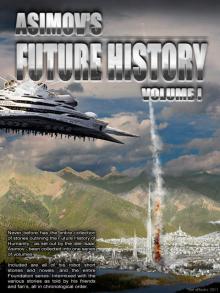 Asimov's Future History Volume 1
Asimov's Future History Volume 1